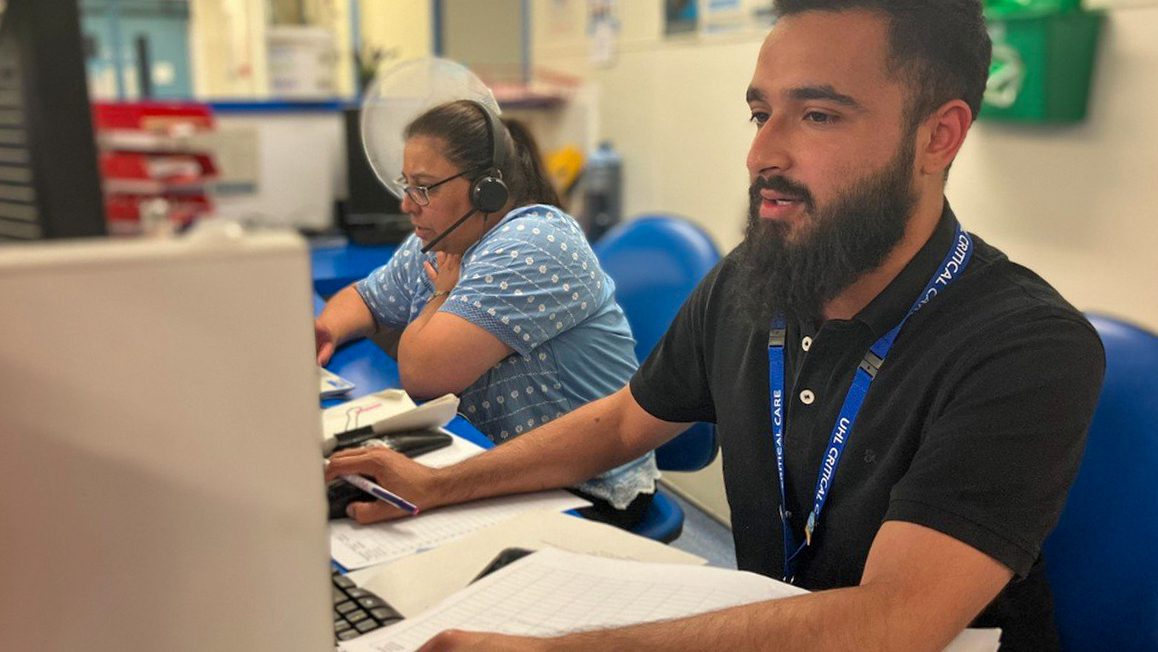The mobile tool – which gives clinical and operations teams real-time visibility of the patient journey, bed inventory and system bottlenecks – has been incrementally rolled out across the Trust, with the first implementation beginning in November 2016.
Its introduction, which has attracted the attention of NHS England Medical Director Sir Bruce Keogh, has led to a consistent reduction in the number of patients awaiting beds, relieved pressure on the Emergency Department (ED) and helped reduce patient outliers. In addition, the solution has not only enhanced cross-organisation communications, it has improved collaboration with commissioners and system partners in social care – helping NUH accelerate discharge times with more proactive management of the external flow of patients out of the hospital.
The deployment is part of a long-term strategy by NUH to transform services by harnessing the power of information. The solution is just one component of a suite of tools the Trust is using to empower staff with real-time data to inform decision-making – integrating seamlessly with Nervecentre’s eOps, Clinical Notes and PSAAG -Whiteboard systems.
Real-world drivers
NUH’s implementation of Nervecentre Bed Management was a specific response to escalating demand on the ED that had led to a drop-in performance against the 4-hour standard achievement in the prior year. Growing demand in the ED was placing sustained pressure on the emergency pathway and, in the process, having a significant impact on patient flow across the hospital.
Nervecentre Bed Management gives NUH staff real-time visibility of the operational demands on the Trust and a tool for collaboration across the organisation. Clinicians can escalate pathways, expedite discharge and identify barriers to optimal patient flow. The solution, which clinicians access on their mobile devices, has replaced manual systems on NUH wards. Members of the multidisciplinary team – such as doctors, nurses and Bed Managers – are able to request a bed for a patient and update flow information such as the dates when patients are predicted to be medically safe.
Operational teams can access an accurate real-time view of patient and bed inventory – giving them hospital-level visibility of available, occupied and closed beds, outliers and patients due, or safe, for discharge. Similarly, the tool enables Operations Managers to identify and manage pressure points and bottlenecks – both internally and within external system partners – that may be causing avoidable delays. It also helps the organisation digitally track ‘red and green days’ in real time.
Impact on NUH
Miriam Duffy, Director of Operations, NUH, said:
“The impact of implementing the Nervecentre Bed Management system has been twofold. Firstly, visibility of capacity across the whole Trust has enabled operational teams to proactively manage beds and give patients the best possible experience. Patients waiting for beds at 0600 – the system measure – has consistently fallen month-on-month since November 2016, relieving pressure in ED. The number of patients that have to be outlied to a ward out of their division has also fallen. Behaviour of bed management teams within divisions has changed significantly to enable open dialogue and cooperation of working. There have been days when we have had significant bed pressures, but these are much less frequent and recovery from them is quick and sustained.
“Secondly, information sharing with our system partners has also improved. As ward teams have responded by maintaining current information on Nervecentre, proactive management of the discharge process has improved. Accurate information is now shared on a daily basis with our system partners to maintain external flow out of the hospital and escalate any delays in a timely manner.”
Patient flow: a national priority
Improving patient flow has become a national priority for acute hospitals, with NHS leaders recognising it as a crucial factor in maximising NHS resources, meeting performance measures and delivering optimal patient outcomes. To support this, NHS England has published new guidelines to promote best practice as recently as July 2017. Good Practice Guide: Focus on Improving Patient Flow follows recommendations outlined in Sir Bruce Keogh’s Safer, Faster, Better in 2015 as part of the Urgent and Emergency Care Review. Sir Bruce met frontline staff at the Queen’s Medical Centre (QMC), Nottingham on July 25, 2017 to see how NUH is using Nervecentre technology to improve the flow of patients through its hospitals.





